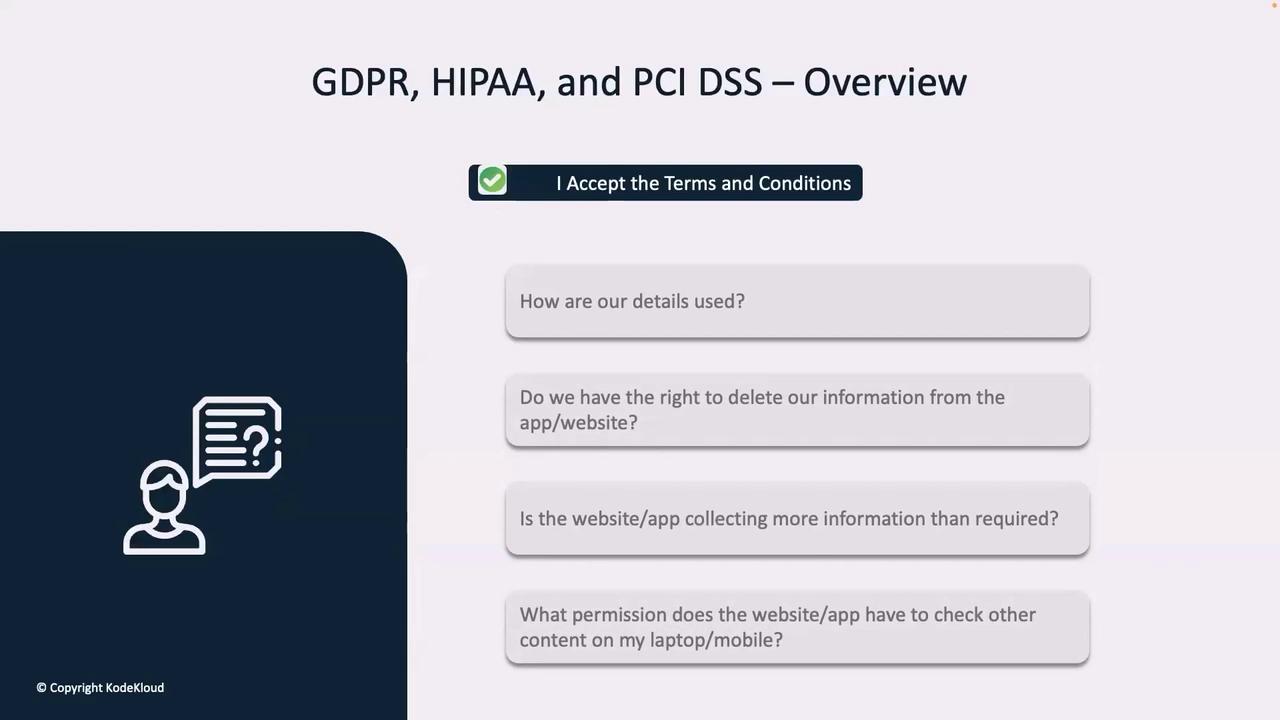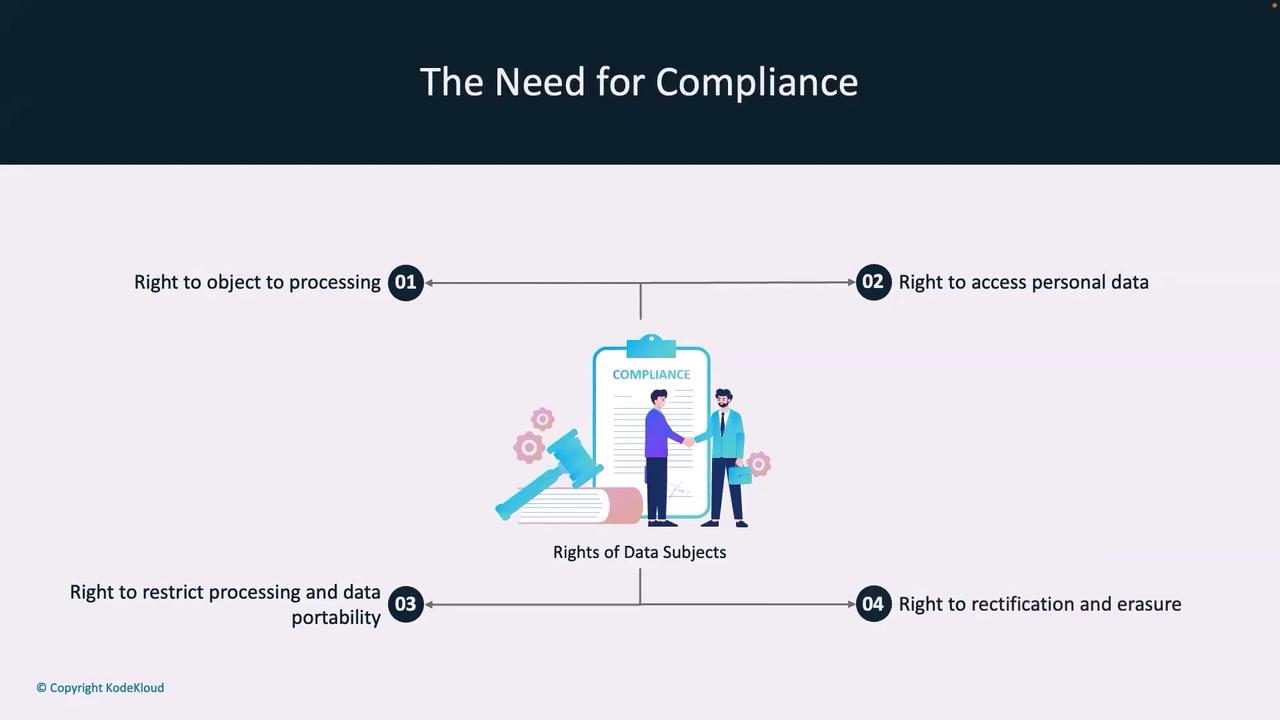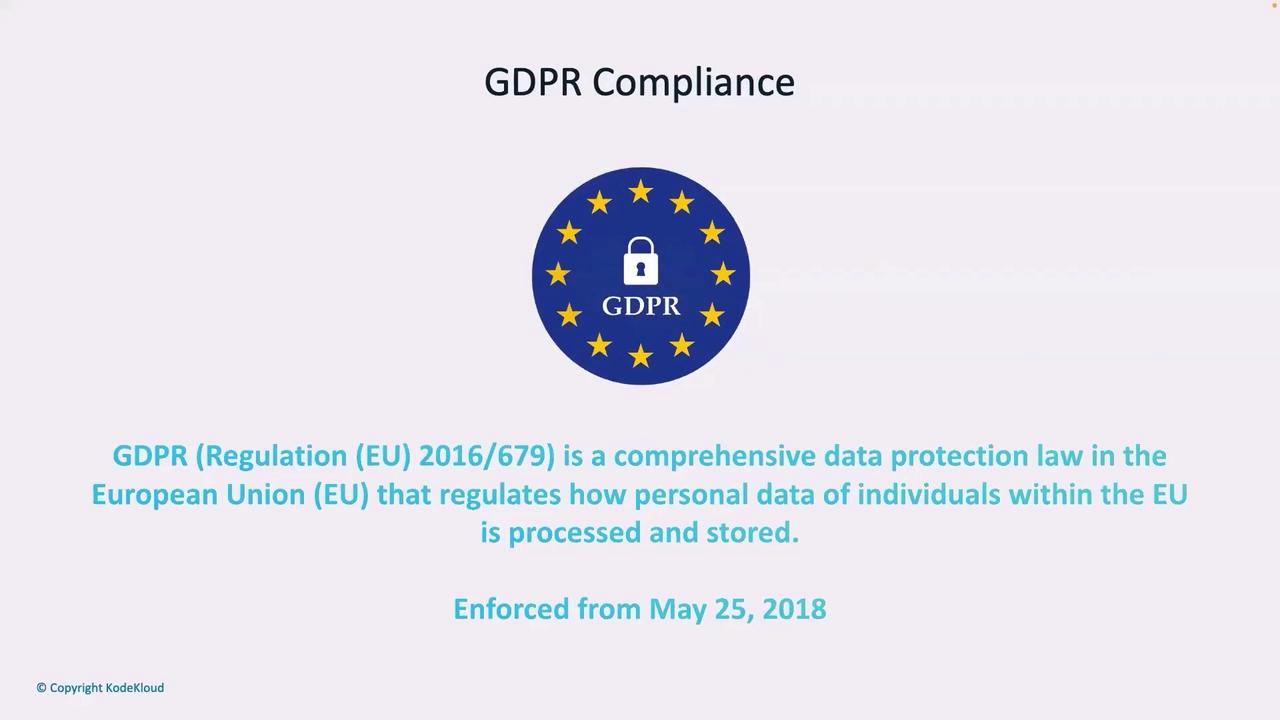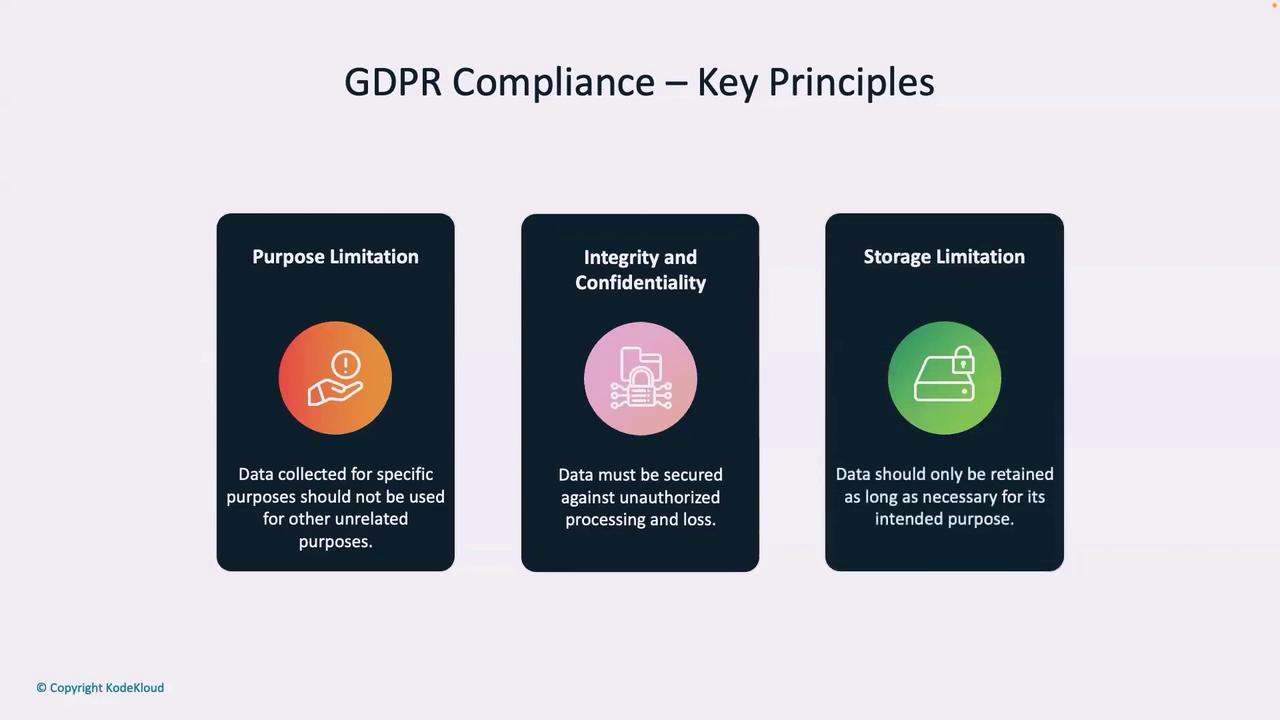Fundamentals of MLOps
Data Security and Governance
Need of Compliance and GDPR
Hello and welcome back. In this lesson, we will dive into various data compliance standards that organizations adhere to, and understand why compliance is not just a regulatory formality but a cornerstone in protecting individual rights.
Before we delve into the specifics, consider the moments when you install or update an app, or complete a form on a website. Often, you accept terms and conditions without much thought. But have you ever wondered how your data is being used? For example, do these apps have the authority to delete your information later on, or might they collect more data than necessary? Is there a possibility they could access other content on your computer or mobile device?

These concerns underscore the significance of data compliance, which is designed to protect the rights of data subjects. Compliance ensures that individuals have the right to:
- Object to data processing
- Access their personal data
- Restrict processing or transfer data between organizations
- Request rectification as well as complete erasure of personal data

Understanding GDPR Compliance
Let us begin by discussing the General Data Protection Regulation (GDPR). Enforced since May 2018, GDPR is one of the strictest data protection laws globally, fundamentally transforming how organizations within the European Union manage personal data. For instance, when Facebook was accused of mishandling user data, the hefty fines imposed under GDPR sent a clear message about the importance of compliance. This regulation not only shields users from misuse of their personal information but also fosters trust between organizations and their customers.

Core Principles of GDPR
GDPR is built on several key principles that ensure the protection and proper handling of personal data:
Lawfulness, Fairness, and Transparency:
Organizations must process personal data lawfully while being transparent about its usage. A common example is the cookie consent banner on websites—a fundamental aspect of GDPR compliance.Data Minimization:
Only the necessary data should be collected. For example, an e-commerce website should not request a passport number merely for account registration.Accuracy:
Personal data must be kept accurate and up-to-date. An inaccuracy, such as an incorrect loan status from a bank, violates GDPR standards.
Additional key principles include:
Purpose Limitation:
Data collected for one purpose should not be repurposed without explicit consent. For example, an email provided to receive an invoice should not be later used for unsolicited marketing.Integrity and Confidentiality:
Ensuring data security is crucial. This is why sectors like banking and healthcare invest heavily in encryption and robust security measures to prevent unauthorized data access.Storage Limitation:
Data should not be retained longer than necessary. For instance, after a payment transaction, an online retailer should delete sensitive credit card information promptly.

Note
GDPR compliance is mandatory. Organizations handling sensitive personal data are required to appoint a Data Protection Officer (DPO) to ensure these regulations are upheld.
Penalties for Non-Compliance
It is important to note that GDPR compliance is not optional. The regulatory framework imposes severe penalties for non-compliance, with fines reaching up to €20 million or 4% of the global revenue, whichever is higher. For example, Google faced a fine of approximately €50 million for failing to secure adequate consent for data collection used in advertising. This emphasizes that adhering to GDPR is not only a legal requirement but also a strategic investment in user trust and brand reputation.
This discussion on GDPR sets the stage for further exploration, including the essentials of HIPAA compliance, which we will delve into in subsequent lessons.
Thank you for joining this session and deepening your understanding of data compliance matters.
For more insights on data protection and compliance regulations, explore our other lessons and related documents.
Learn more about GDPR
Explore HIPAA compliance
Watch Video
Watch video content